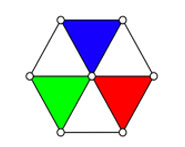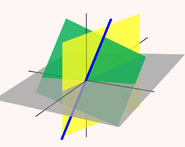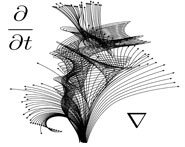


 تاريخ الرياضيات
تاريخ الرياضيات
 الرياضيات في الحضارات المختلفة
الرياضيات في الحضارات المختلفة 
 الرياضيات المتقطعة
الرياضيات المتقطعة
 الجبر
الجبر
 الهندسة
الهندسة 
 المعادلات التفاضلية و التكاملية
المعادلات التفاضلية و التكاملية 
 التحليل
التحليل
 علماء الرياضيات
علماء الرياضيات |
Read More
Date: 21-3-2016
Date: 21-3-2016
Date: 27-3-2016
|
Born: 31 October 1711 in Bologna, Papal States (now Italy)
Died: 20 February 1778 in Bologna, Papal States (now Italy)

Laura Bassi's father was a lawyer and so, not surprisingly, the family were wealthy. Laura's father employed a private tutor, Gaetano Tacconi who was a professor at the College of Medicine, to educate her and she received excellent teaching in a large range of subjects from Tacconi over a period of seven years. Tutoring at an advanced level began when she was thirteen years old and continued until she was twenty. She is said to have studied anatomy, natural history, logic, metaphysics, philosophy, chemistry, hydraulics, mechanics, algebra, geometry, ancient Greek, Latin, French, and Italian.
Tacconi was very impressed with the abilities of his pupil and through him she began to gain a reputation among the circle of scholars in Bologna. One of these learned men was Prospero Lambertini. He had been born in Bologna and awarded a doctorate in theology and law by the University of Rome. He was elevated to cardinal in 1728, and in 1731 he returned to Bologna where he was elevated to archbishop by Pope Clement XII. Lambertini became Bassi's patron and, to show off his protégé, set up a debate between her and four professors from Bologna on 17 April 1732. The debate was held in the grand Palazzo Pubblico in Bologna and Bassi defended forty-nine philosophical theses. Her success led to the award of a doctorate in philosophy in May 1732 and, following this, an appointment as Reader in Philosophy allowed her to lecture at the University of Bologna. Around this time Bassi also learnt higher mathematics from Gabriele Manfredi.
In 1738 Bassi married Giovanni Giuseppe Veratti, a lecturer in science at the University of Bologna. Despite becoming Laura Veratti at this stage, she is also known by the name Bassi and we will continue to use 'Bassi' through the rest of this article. The marriage was considered wrong by many in Bologna who felt, in the same spirit as fellows in Colleges at the University of Cambridge could not marry and continue to hold their fellowships, Bassi should not be allowed to marry and continue to hold a lecturing position. Actually Bassi's lecturing position was not all that it might seem, for it only allowed her to lecture on special occasions when the lecture was open to the public when anyone, including women, could attend. She had not been allowed to lecture to regular classes at the university where the students would all be men. In fact marriage actually improved this difficult situation, for Bassi was now allowed to lecture in her home.
In 1739 she requested that the University of Bologna increase her teaching duties but, despite support from Lambertini and Flamino Scarselli, the secretary to the Bolognese ambassador at the papal court, all she was granted was funds for equipment to conduct physics experiments in her home. For quite a number of years after her marriage Bassi had to divide her time between academic studies and caring for young children. Laura and Giuseppe Veratti had many children; some sources suggest that they had twelve but it seems more likely that the actual number was eight. However many children they had, only five reached adulthood. Three of her sons were named Paolo, Giovanni, and Giacomo. Paolo became a physicist while the other two became canons in the Church. Her only surviving daughter, Catarina, became a nun.
On 17 August 1740, Cardinal Lambertini was elected to succeed Pope Clement XII becoming Pope Benedict XIV. This meant that Bassi had far less access to her patron, but nevertheless she was still able to communicate with him via Scarselli. However having a pope who was a strong supporter of science and scholarship led to important developments in the country. One of Pope Benedict XIV's ideas to improve the level of scholarly research was to create a society called the Benedettini. The pope picked 24 scientists to form the Benedettini, and made a condition of their acceptance that they had to submit one paper per year to him. Bassi asked Scarselli to try to persuade the pope to appoint her as the twenty-fifth Benedettini. This was a difficult decision since some of the twenty-four who had already been appointed were opposed to Bassi joining the select group while others supported her. In the end Benedict XIV went for a compromise solution by appointing Bassi as the twenty-fifth Benedettini but not giving her the same voting rights as the others.
Bassi's main contributions were made in physics although she wrote papers on a number of other scientific subjects including two mathematics papers. This was a time when physics was still divided between the views of Descartes and those of Newton. Bassi was a staunch supporter of Newton and her lectures were designed to introduce her students to Newtonian physics. Of 28 papers by Bassi which are held in the Bologna Academy of Sciences in Bologna, thirteen are on physics, eleven are on hydraulics, two are on mathematics, one is on mechanics, one is on technology, and one is on chemistry. This is a remarkable achievement, although one would have to say that they contain little this is original. By the conditions of the Benedettini, she submitted a paper each year, the first three being: On the compression of air (1746); On the bubbles observed in free flowing liquids (1747); and On bubbles of air that escape from fluids(1748). Although many of her papers remain in manuscript, having never been published, one of her papers on mechanics De problemate quodam mechanico and one on hydraulics De problemate quodam hydrometrico were published in the Commentaries of the Bologna Institute in 1757.
Rather strangely, the main subject on which Bassi undertook experimental work was electricity yet she never wrote a paper on the topic. In a well equipped laboratory in her home Bassi collaborated with her husband on medical uses of electricity. The greatest honour given to Bassi was in 1776 when she was appointed to the Chair of Experimental Physics at Bologna. She did not achieve this easily but only after a lengthy debate did the University agree to appoint her to a professorship. This appointment did have the consequence that Bassi's husband now officially became her assistant. Bassi became the first woman appointed to a chair of physics at any university in the world. It was a fitting high point for her career, but sadly she did not live long to enjoy the position for she died just over a year later.
Books:
Articles:



|
|
|
|
دخلت غرفة فنسيت ماذا تريد من داخلها.. خبير يفسر الحالة
|
|
|
|
|
|
|
ثورة طبية.. ابتكار أصغر جهاز لتنظيم ضربات القلب في العالم
|
|
|
|
|
|
|
قسم شؤون المعارف ووفد من جامعة البصرة يبحثان سبل تعزيز التعاون المشترك
|
|
|